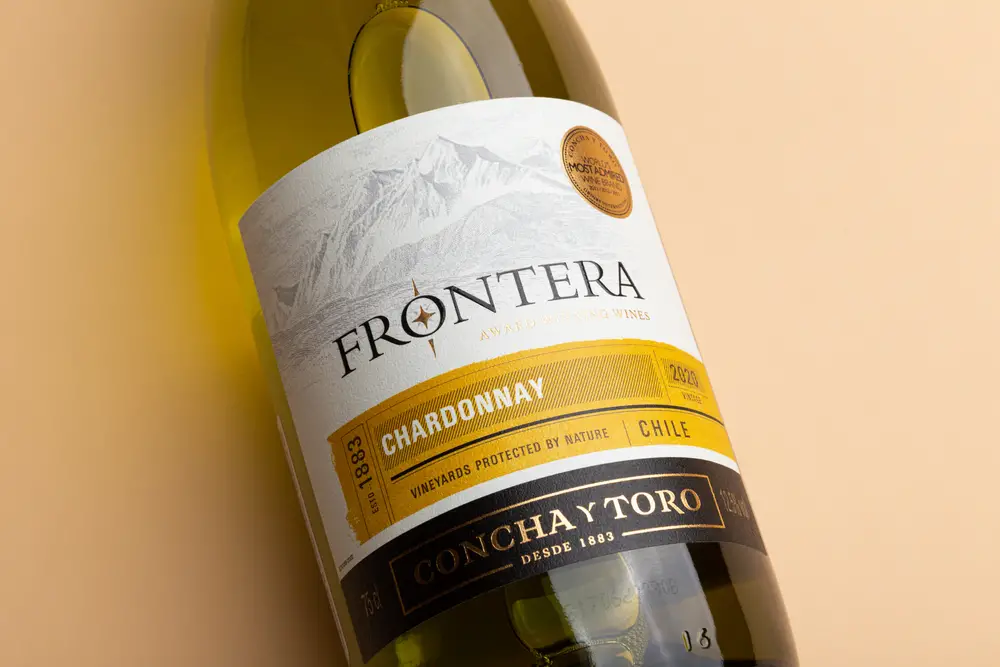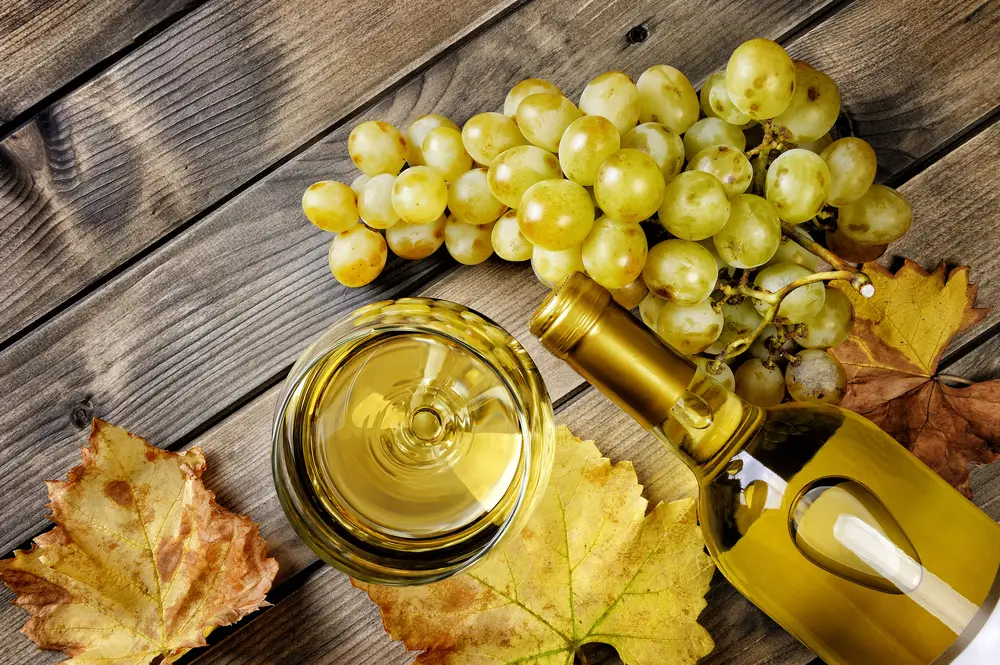Chardonnay is a popular variety of white wine. It has some staple characteristics, like being generally medium to full bodied with moderate acidity.
Whilst chardonnay is often dry, the question of whether chardonnay is sweet or dry is not so straightforward to answer. It depends greatly on the type of chardonnay you are drinking, where it was made, and how it has been aged.

What Is Chardonnay?
Chardonnay is a green grape variety that originates in the Burgundy region of France. It is now grown in many different countries including New Zealand, Australia and even the United Kingdom.
Chardonnay grapes are used for various types of wine, including sparkling wines like Champagne and Franciacorta.
Chardonnay wine is very popular and it can be crisp and clean or rich and oaky depending on many factors. The flavor notes of chardonnay can include fruits like apple, citrus, papaya, and pineapple.
If it has been aged with oak then you will also pick up a hint of vanilla and some bitterness from the tannins.
Related: Chardonnay compared to Riesling.
What Does ‘Dry’ And ‘Sweet’ Mean?
When describing wine, the dryness refers to the level of residual sugar left after fermentation.
The sweetness in wine comes from the naturally occurring sugar in grapes. During fermentation, the sugar in the grape juice is turned into alcohol.
If there is less than 1% residual sugar left in the wine then it is considered dry. The more residual sugar left in the wine, the sweeter it will be.
Some cheaper brands of Chardonnay will also add sugar to the wine, but this heavily compromises the flavor.
The length of time that the grapes were on the vine before harvest can also affect the sweetness of the wine. Late harvested grapes tend to have a more intense and sweet flavor.
Is Chardonnay Dry?
As mentioned earlier, Chardonnay is generally a dry wine.
However, you now know what determines the sweetness level of wine is dependent on many factors, including how long the winemaker lets the grapes ferment and how long the grapes were left on the vine before being harvested.
The winemaker may also add sweeteners after fermentation. This is usually-but not always- a sign of low quality wine that needs to be made more palatable. It may also be to extend the shelf life of the wine.
But there is more to the story here. Just because Chardonnay is a dry wine, doesn’t necessarily mean some people won’t detect sweet notes.
Is Chardonnay Sweet?
So you now know what Chardonnay is, what ‘sweet’ and ‘dry’ means in wine terms, and that Chardonnay is a classic dry white wine.
However, this popular medium to full-bodied dry white is a little more complex than that. What may taste dry to you, may actually have sweet tones to another person.
Generally, the sweet sensations you may taste in a Chardonnay come down to a mix of factors.
For example: fruit tastes, fruit aromas (smell is intricately tied to our sense of taste and can trick us), oaked or unoaked barrel storage (more on that below), tannins, acidity and alcohol levels can add a sense of sweet tones.
There is always the important factor of the wine taster, too.
Taste is subjective in many ways. What compounds and variations appeal to you may not appeal to someone else.
In the same way, you may taste dryness in Chardonnay, however, someone else can detect sweet notes a little more so.
Oaked And Unoaked Chardonnay

How the wine is aged has a big impact on the flavor.
Ageing a wine-in this case Chardonnay- in oak barrels will take on different notes such as vanilla, and sometimes a more earthy tone.
They will also have more tannins, which are released from natural materials like plants, leaves and wood. The tannins give the wine a more bitter taste.
Generally, oak aged Chardonnay will be richer, full bodied and may have a spicy element to it. You may hear oaked Chardonnay being described as creamy, buttery, and fruity (pineapples and mango taste).
Whilst Chardonnay tends to be dry, the oak ageing process can cause the buttery, fruity flavors to come off sweeter on the palate.
The richer, oaked Chardonnays can handle being served alongside heavy, cream based sauces and even grilled meats, fatty meats and game birds.
Unoaked Chardonnay that has been fermented or aged in stainless steel tanks will retain a drier, crisper and brighter flavor.
It will be more zingy, and you will be able to pick up the tartness of the pineapple and lemon fruity notes of the wine.
Unoaked Chardonnay is generally cheaper to make, and has that distinctive dry taste that Chardonnay is generally known for.
Unoaked Chardonnay also tends to be produced in cooler climates like certain parts of Chile, France, West coast of Australia, and Willamette valley in Oregon. Unsurprisingly, you’ll also find great Pinot Grigio and Pinot Blanc here, which are not too dissimilar to Chardonnay.
The crispness of unoaked Chardonnay pairs very well with delicate fish, shellfish, and goats cheese salads.
A medium bodied Chardonnay, whether oaked or unoaked, will pair well with aged cheeses like gouda and gruyere. It also goes well with firmer fish, like swordfish, and white meats like chicken and pork.
How To Serve Chardonnay
Chardonnay should be served chilled, but not too cold or the flavors will be muted.
Aim for 50 to 55 degrees fahrenheit, which you should be able to achieve by putting your wine in the refrigerator for around 2 hours.
Alternatively, you can sit it in an ice water bath for about 40 minutes.
Summary
As you can see, Chardonnay is generally a dry wine.
If you prefer a richer and sweeter white wine, then oaked Chardonnay which is grown in a warm region or harvested late is going to do the trick. With that said, if you prefer a dry and acidic Chardonnay then stick with an unoaked variety grown in a cool region.
If you are drinking a Chardonnay that is very sweet, it is probably cheap and poor quality, with added sugars. Try and avoid Chardonnay like this if you want to experience the true flavor of the grape.
Now that you know more about Chardonnay, you can serve it with confidence at your next dinner party and impress your family and friends.
- Shrimp Cocktail (and More) Wine Pairing Guide - 09/06/2022
- What Wine Serving Sizes Look Like: Standard Size and More - 08/06/2022
- How Much Sugar is in Wine: Glass and Bottle Sugar Content - 08/06/2022






